 Melissa Anderson
Melissa Anderson
Trance trance convolution: two hypnotic films written and directed by Marguerite Duras in the mid-1970s.
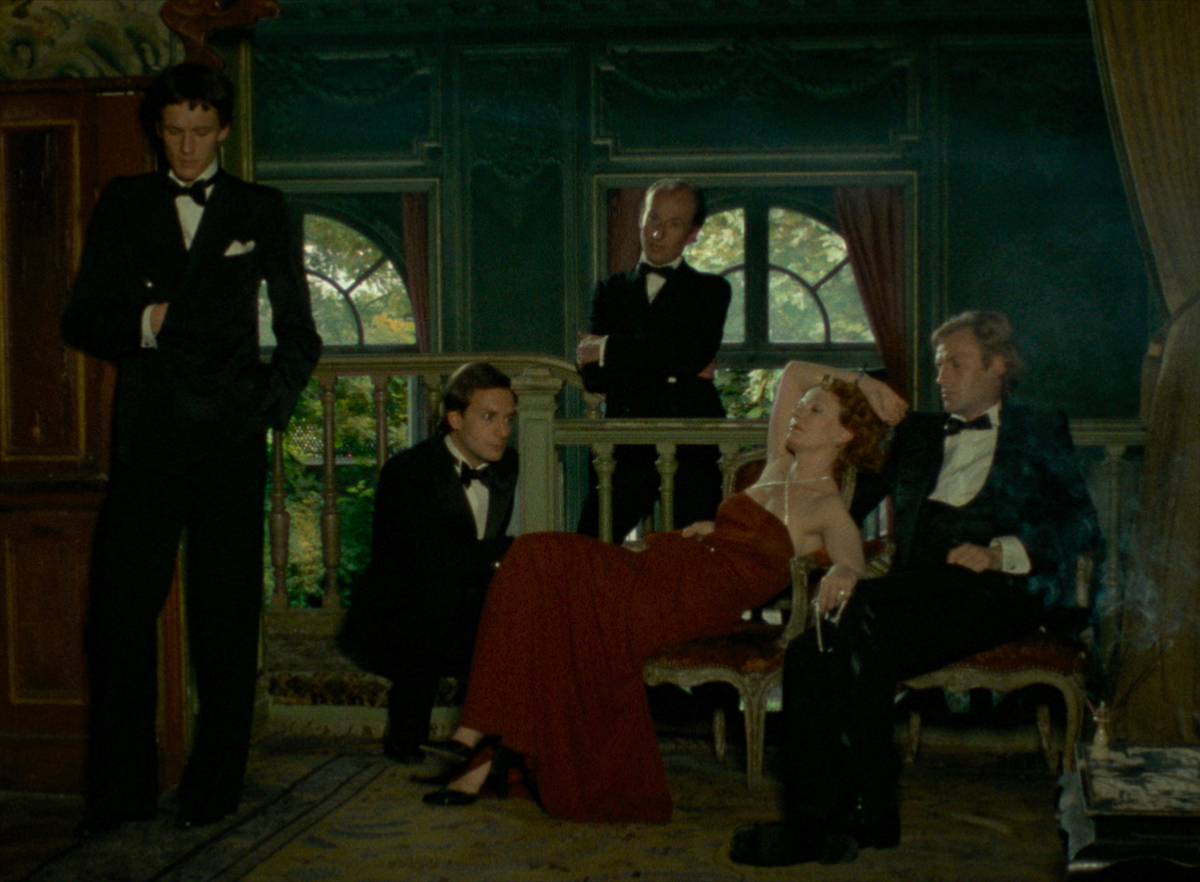
From left to right: Mathieu Carrière as the German embassy attaché, Didier Flamand as the young guest, Vernon Dobtcheff as Georges Crawn, Delphine Seyrig as Anne-Marie Stretter, and Claude Mann as Michael Richardson in India Song. Courtesy the Criterion Collection.
India Song and Baxter, Vera Baxter, both written and directed by Marguerite Duras, available on Blu-ray and DVD from the Criterion Collection February 28, 2023
• • •
There must be a name for it: that peculiar distortion of memory that makes a cinemagoer absolutely convinced that a certain scene occurs in a film only to learn, upon rewatching the movie however many years later, that it existed only in her mind. I first saw India Song (1975), Marguerite Duras’s haunting minimalist epic of desire and decay, at New York’s Walter Reade Theater, in 1997. Over the ensuing quarter century, the only section of this mesmerizing movie I could vividly recall was a long take of Delphine Seyrig, the film’s star, dressed in a white, bejeweled, floor-length gown, slowly descending an interior staircase.
This never happens in India Song, as I realized while revisiting it two weeks ago, a discovery made possible thanks to “Two Films by Marguerite Duras,” a handsome home-video set from the Criterion Collection that also includes Baxter, Vera Baxter (1977). My second viewing was accompanied by a low hum of anxiety, as I waited for a phantom moment that would never arrive. But my state of mild derangement (duras-gement?) may have provided the ideal conditions to watch anew a film in which location, temporality, and meaning itself are never quite stable.

Michael Lonsdale as the vice-consul of Lahore and Delphine Seyrig as Anne-Marie Stretter in India Song. Courtesy the Criterion Collection.
Though I feel absurd offering a précis of such an elliptical movie, India Song, at the bare level of “plot,” takes place in the 1930s and concerns Anne-Marie Stretter (Seyrig), the wife of the French ambassador to India, who passes her listless days and nights at the crumbling-chic embassy in Calcutta amusing herself with four different lovers. Besotted with Stretter, a Lahore-stationed representative of France (Michael Lonsdale) visits her at this elegantly decomposing fortress; his affections unrequited, he goes mad.

Claude Mann as Michael Richardson and Delphine Seyrig as Anne-Marie Stretter in India Song. Courtesy the Criterion Collection.
More simply and satisfyingly, India Song can be distilled to its two elemental parts: “the film of bodies” and “the film of voices,” per Benoît Jacquot, the movie’s assistant director, recalling Duras’s conception of the project in a 2020 interview included with the Criterion set. Sound and image are radically sundered. Onscreen, the performers (seven total) are never shown speaking; the audio of their desynchronized conversations, cries, and utterances remains offscreen, as do the observations of a host of narrators (including Duras), all forming a chorus of disembodied voices. “Where are we”? asks one of those chroniclers. A spectator might wonder the same. “Calcutta” is actually Boulogne-Billancourt, the tony Paris suburb; the embassy is played by the Château Rothschild. Creating this chimeric geography was a canny move by Duras, one that simultaneously estranges her home turf and de-exoticizes India. (Duras would grapple with the question of exoticism in three of her autobiographically inflected novels, set in what was then called French Indochina, where she was born in 1914.)
Additional aspects of the soundtrack add to the deliberate befuddlement: some characters refer to events in the present tense, actions that will then be described by others using the preterite. Many of the sonic components bewitch, namely Carlos d’Alessio’s score, especially “India Song Blues,” its lento piano an essential part of the film’s languorous mood. Nearly all the voices are aurally enchanting, none more so than the tobacco-deepened altos of India Song’s lead actress and director.

Claude Mann as Michael Richardson and Delphine Seyrig as Anne-Marie Stretter in India Song. Courtesy the Criterion Collection.
But if the ear is delighted, the eye is ravished. In this “film of bodies,” Seyrig, here at her most soignée, and the quartet of actors playing her paramours, all clad in Cerruti 1881, are often arranged in tableaux vivants: static scenes that suggest postcoital lassitude more than passivity. When they are in motion—to dance, caress, kiss, lie supine on the carpet—each movement, each gesture is executed with hypnotic slowness. As she leads her beaux down a corridor, the unhurried pace of Seyrig-as-Stretter seems almost Judson-esque; her perambulations around the embassy recall those of dancer (and Judson vet) Lucinda Childs through Venice in Unguided Tour (1983), directed by her then-girlfriend, Susan Sontag, another writer who, like Duras, branched out into making films in the late 1960s.
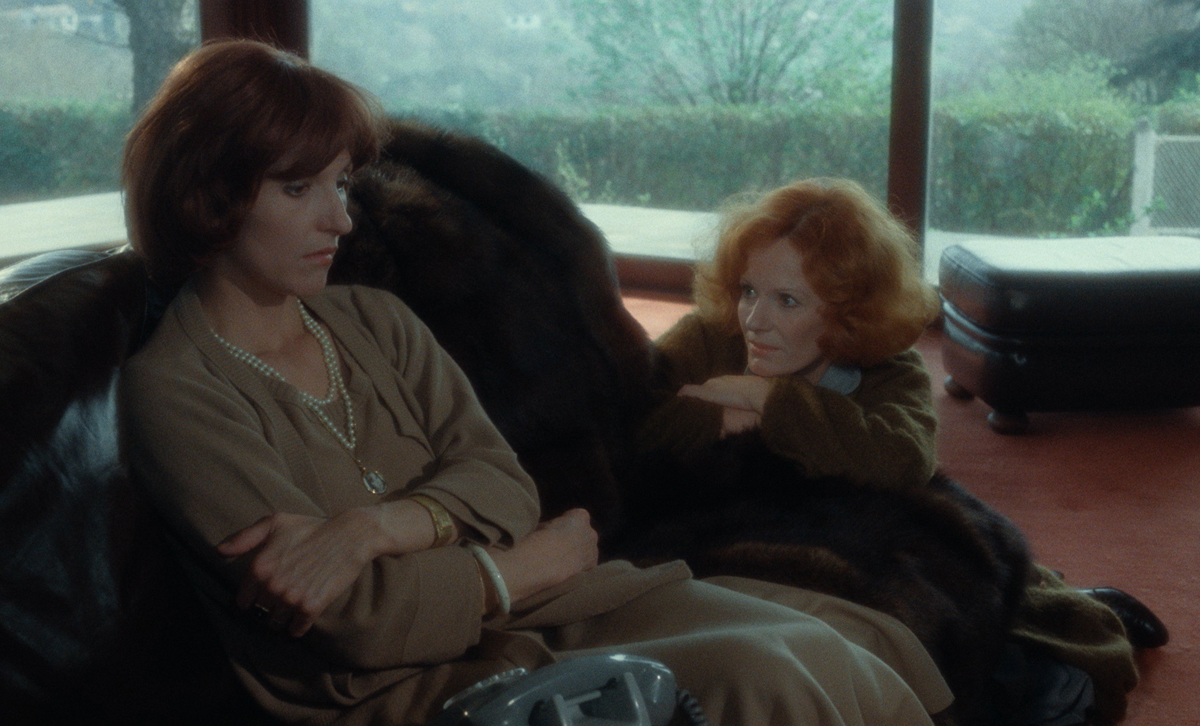
Claudine Gabay as Vera Baxter and Delphine Seyrig as the unknown in Baxter, Vera Baxter. Courtesy the Criterion Collection.
Seyrig reteamed with Duras for Baxter, Vera Baxter, playing not the title character but a woman identified in the credits only as “the unknown.” Despite her anonymity, Seyrig’s role is just as important as that of the eponymous thirty-seven-year-old bourgeois wife and mother (Claudine Gabay), who spends most of the film wandering in and out of the rooms of a modernist villa in Thionville, a (fictional) seaside town. Sound and image are synced in Vera Baxter, yet the torpid ambience is similar to India Song’s. This is trance cinema, tranq cinema, existing somewhere on the thin edge dividing consciousness from sleep.
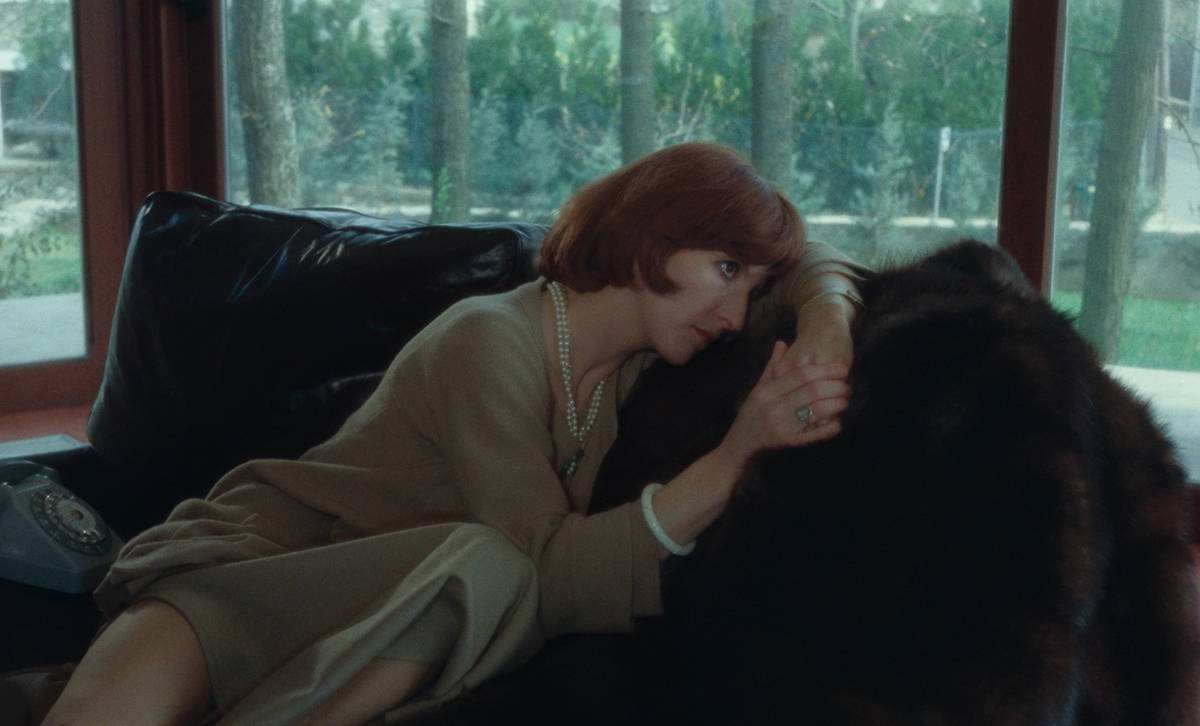
Claudine Gabay as Vera Baxter in Baxter, Vera Baxter. Courtesy the Criterion Collection.
Part of the film’s spell emerges from Duras’s appreciation for the incantatory power of repeated proper nouns. Place names—the Balearics, Chantilly, Bordeaux—that have significance in Vera’s unhappy union with Jean, her heard-but-never-seen husband, are frequently invoked. But it is the reiteration of her full moniker, the second syllable of her surname euphoniously aerated by the French pronunciation so that it sounds like “Bax-tair,” that most thoroughly enthralls. (Did Duras purposefully title her film to summon up the way Agent 007 introduces himself?)
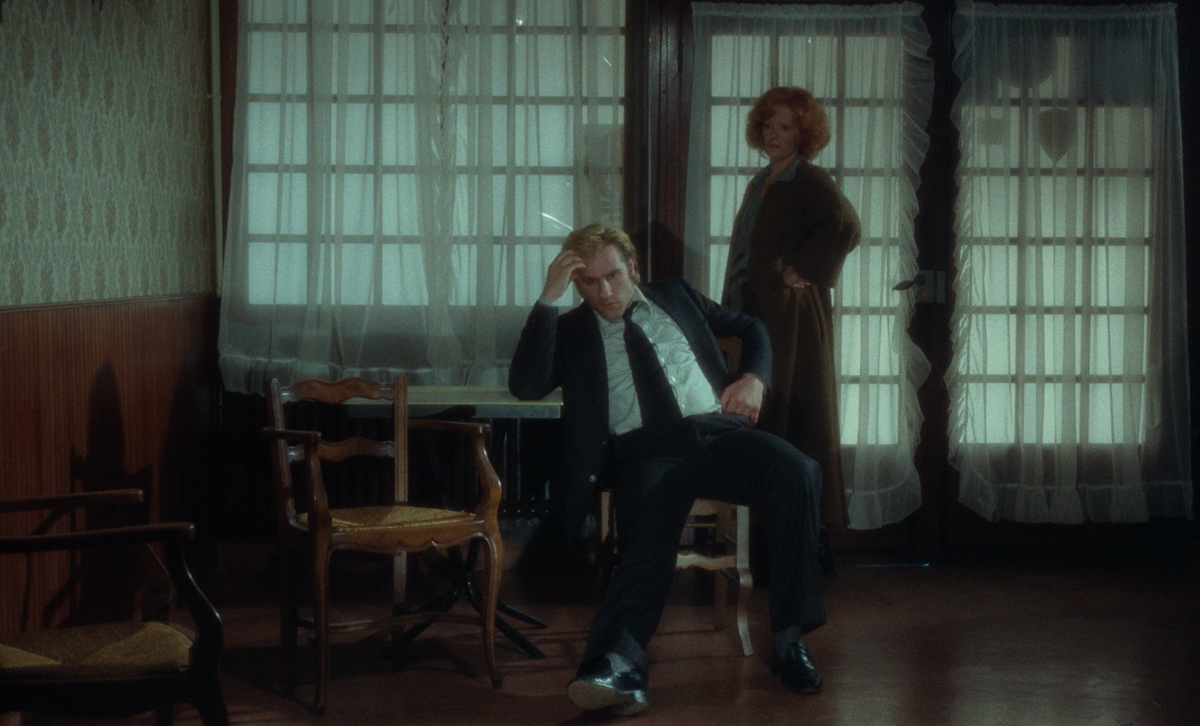
Gérard Depardieu as Michel Cayre and Delphine Seyrig as the unknown in Baxter, Vera Baxter. Courtesy the Criterion Collection.
However auditorily pleasing, that nom de famille—which, as eternal custom demanded, became Vera’s when she wed—is just as immuring, Duras suggests, as the littoral residence she never leaves. (But from which she is constantly reminded of vibrant life outside, courtesy of distant, jaunty party music composed by d’Alessio and punctuated by an Andean flute.) She receives two visitors who put her marital malaise into sharper focus. The first, Monique (Noëlle Châtelet), a former lover of Jean’s, stays briefly, her remarks often barbed (“We lie a lot, you and I”). The second, Seyrig’s inconnue, announces herself as an emissary of Michel Cayre (Gérard Depardieu), Vera’s lover, a journalist who appears fleetingly in a hotel bar in the film’s opening scene. This unnamed guest, in no rush to leave, is solicitous, drawing out from Vera both basic biographical data and discomfiting revelations. The unknown woman is something of a seductress, too, telling her reluctant hostess: “Since I first heard your name, I wanted to see the person it belonged to.”
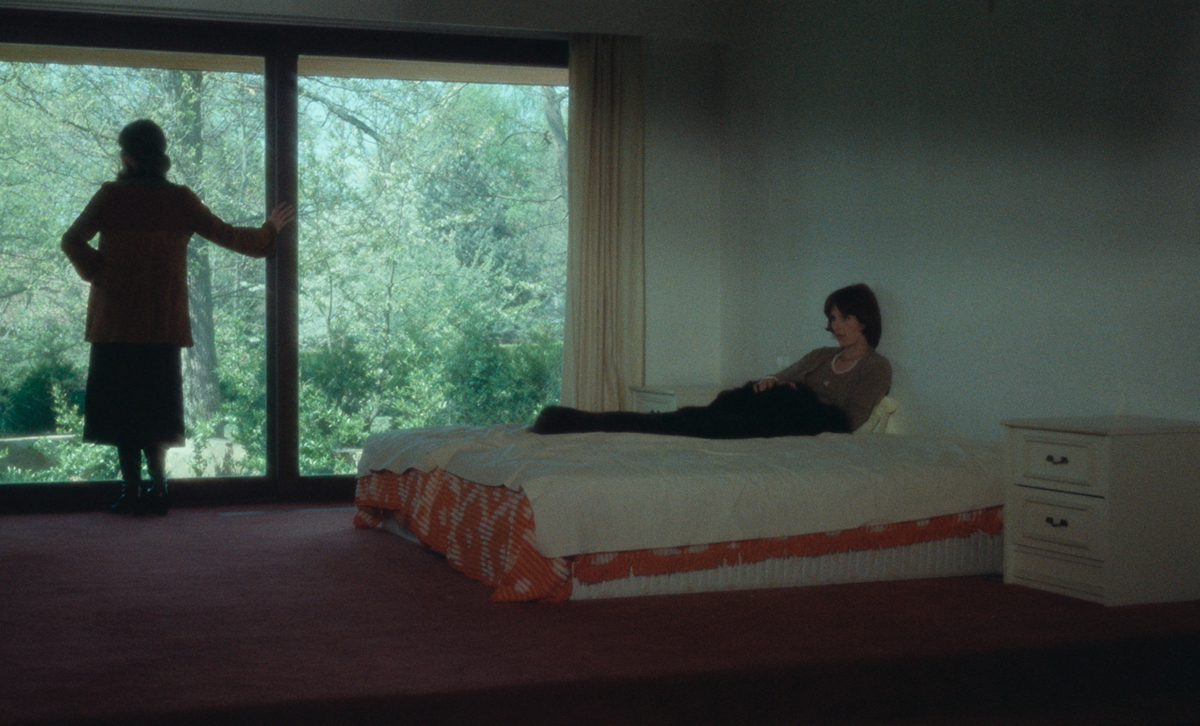
Noëlle Châtelet as Monique Combes and Claudine Gabay as Vera Baxter in Baxter, Vera Baxter. Courtesy the Criterion Collection.
With Vera Baxter, Duras, who was never explicitly aligned with feminism, created, at the very least, an abstract tale of female rapport. The presence of Seyrig, fully committed to women’s liberation, undeniably bolsters this view: the year before Vera Baxter, she, with Carole Roussopoulos, directed S.C.U.M. Manifesto, a short, potent tribute to Valerie Solanas’s enduring anarcho-socialist, misandrous tract. Vera Baxter was the fourth, and final, feature Seyrig made with Duras. My initial viewing of the film took place a fortnight ago. I cannot wait to misremember it.
Melissa Anderson is the film editor of 4Columns and the author of a monograph on David Lynch’s Inland Empire from Fireflies Press.